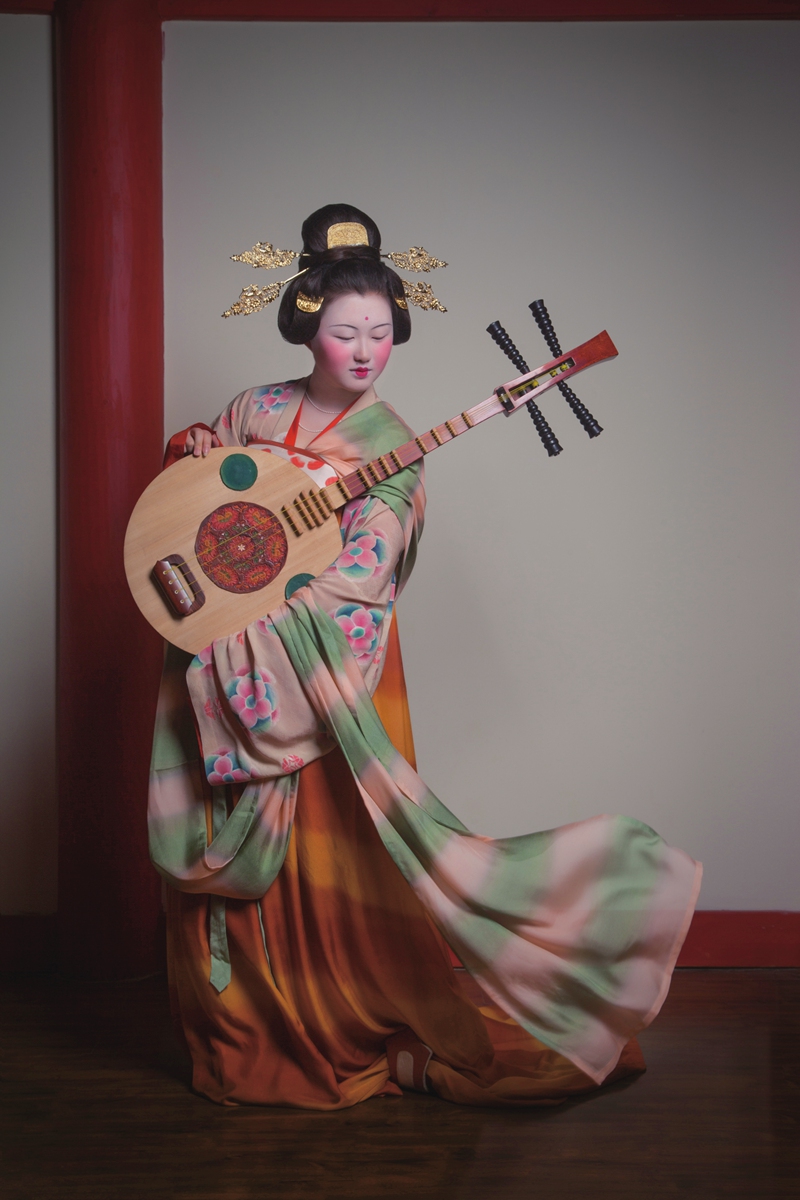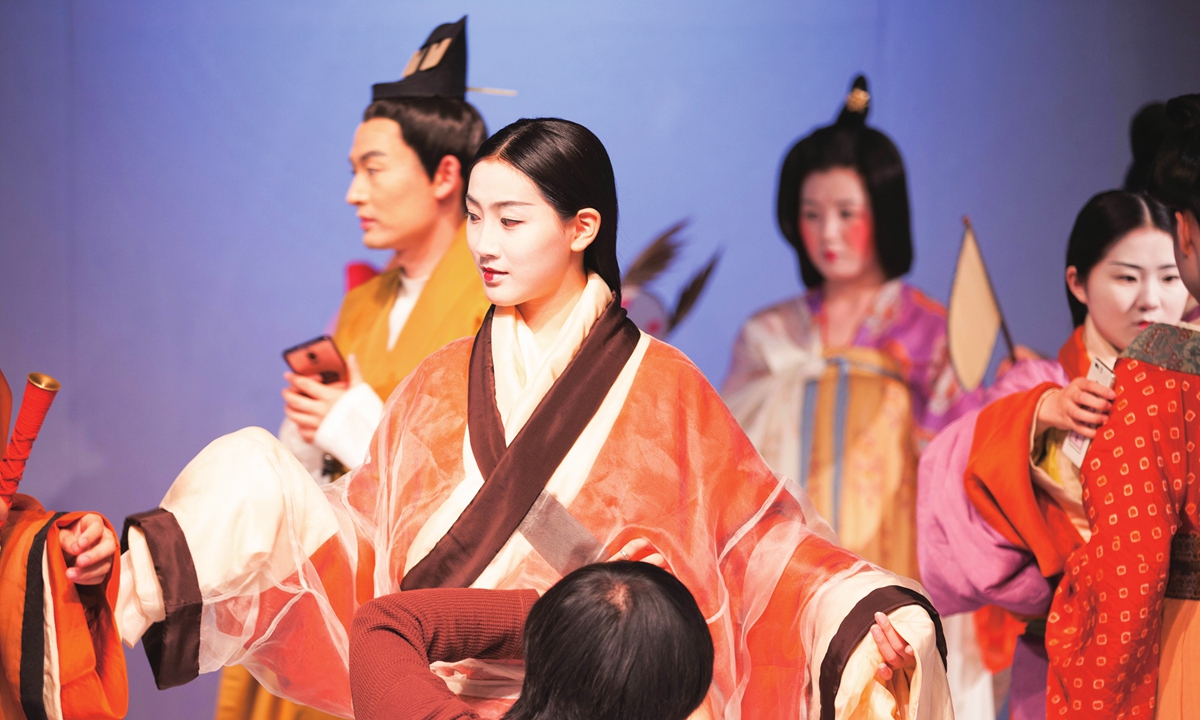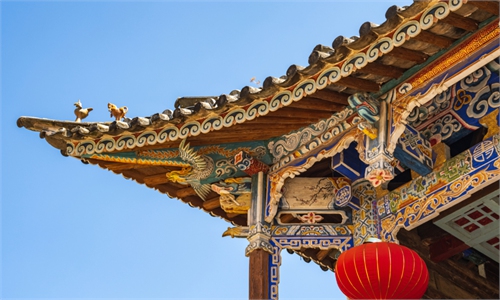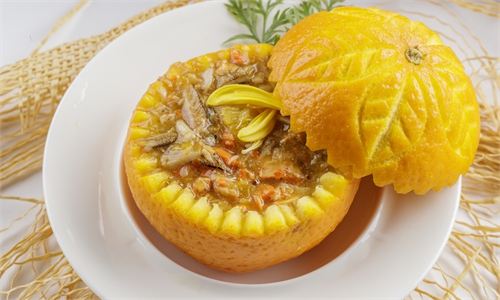ARTS / ART
Shanghai team on mission to revive fashion found in ancient books
Bringing back the past

A model poses for a photo in a recreation of a Tang Dynasty (618-907) outfit by the Shanghai-based costumes restoration team. Photo: Courtesy of Hu Xiao

A team member is tiding up a performer's attire before a fashion show. Photo: Courtesy of Hu Xiao
Editor's Note:Ancient books are not only treasure houses for ancient thought and the crystallization of the wisdom of sages, but also important carriers of the inheritance of a civilization and the collective memory of a nation. Understanding this importance, the Chinese central government recently issued a set of guidelines focusing on strengthening the preservation and publication of ancient books. As the saying goes, "the best way to keep something alive is to make it part of people's daily lives." In this series, the Global Times talk with several people who are currently working to come up with innovative ways to bring China's ancient works into the lives of readers today. The four stories are: Bringing ancient books 'alive' with delicious dishes, Young Chinese create original music inspired by ancient texts, China's wooden building ingenuity still alive today and Shanghai team on mission to revive fashion found in ancient books.
Unlike today's fast fashion clothing lines, the clothing of ancient people was more individualized and exquisite considering they were handmade. Varied and complex accessories, layers and layers of dresses, and noble-led trends make ancient wear difficult to be completely reproduced.
However in Shanghai, a team has been trying to restore ancient Chinese clothing by tracking down traces found inside ancient books and wall paintings and then using their professional knowledge to make costumes for Chinese period dramas.
"Fashion, either clothes or makeup, is very important. It is a reflection of the ideas and state of development of an era and a society," Chi Wenhui, head of the literature research group of the costumes restoration, told the Global Times.
True beauty
In their most recent work published on Sina Weibo, a model posing as a woman from the end of the Han Dynasty (206BC-AD220) can be seen dressed in a green short robe and a yellow mopping skirt, which is referred to in Chinese as ruqun.
"This is a typical dress for the time. You can see a light color floral dress with a darker color top. A layer of chiffon surrounds the outside to make the whole outfit look lighter," said Chi.
The dress is based on ones unearthed from the Han Dynasty Mawangdui Tomb (King Ma's Mound) and some wall paintings unearthed in other tombs from the period. A similar description of the outfit can also be found in Chinese folk song "Mo Shang Sang," which tells the story of a beautiful woman named Qin Luofu.
In the song, Qin wears a light yellow skirt below and a short purple jacket up top.
"This is exactly what we saw from the unearthed dresses from the tomb. We see how the content in the written poem and the unearthed objects confirm each other, which is very exciting!"
Talking about the first time the idea to reproduce ancient clothing came to him, Hu Xiao, one of the founders of the team, said that after seeing so many dresses in paintings he felt ancient people "were truly beautiful."
"What would those clothes look like on people in real life?"
Bearing that in mind, Hu and his team have continued with this work since the establishment of the team in 2007.
"The changes in clothing over thousands of years are scattered in the descriptions of countless books as well as recorded in murals and terracotta figurines. Our job is to restore them one by one, which is very difficult but interesting when you succeed,"said Chi.
When setting out to recreate ancient clothing, the first step is to carry out research, find descriptions in books and then carry out cross-validation by finding corresponding images in paintings and terracotta figures. Then comes experiments to restore the styles and patterns of the clothing, all the time making minor changes until they get the desired results. Now the team works as consultants on many film and television dramas including the hit The Longest Day In Chang'an. In addition, its works have been collected by the China National Silk Museum, the Nanjing Silk Art Museum and other major institutions.
Key to Chinese style
The team has been invited on many occasions to exhibit their works at events such as the national ceremony for the 43rd International Museum Day. Besides this team, many other Chinese designers have also brought their works to the world stage while Western designers and brands such as Elsa Schiaparelli and Valentino have begun incorporating ancient Chinese designs in their clothing lines such as shuitianyi, a type of coat worn while farming.
Traditional Chinese clothing is gradually rising in prominence, but when it comes to going global, fashion designer Wu Haiyan told the Global Times that integrating ancient elements into modern clothing is a big step, and what's more "it is very important to truly understand traditional culture when doing so."
"If a designer doesn't understand traditional elements and uses them at a whim, then the essence of traditional culture cannot be reflected in their works," added Wu.
Chi also mentioned how ancient clothing references the modern world. She believes that in today's world "where we are surrounded by excess use of resources, it is crucial to understand the environmental protection wisdom of the ancients."
"This is a spirit worth learning from, rather than over-pursuing fast fashion," Chi added.


